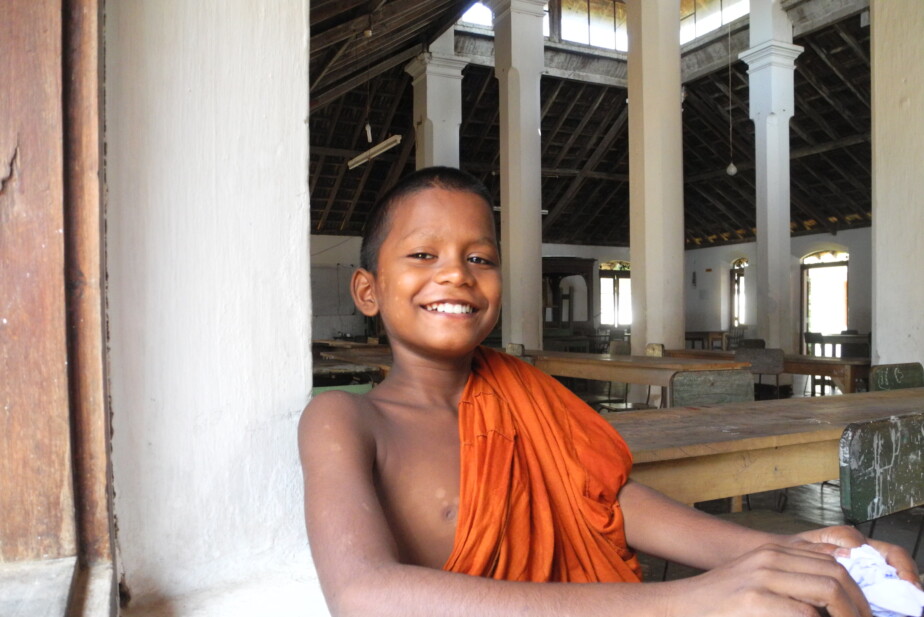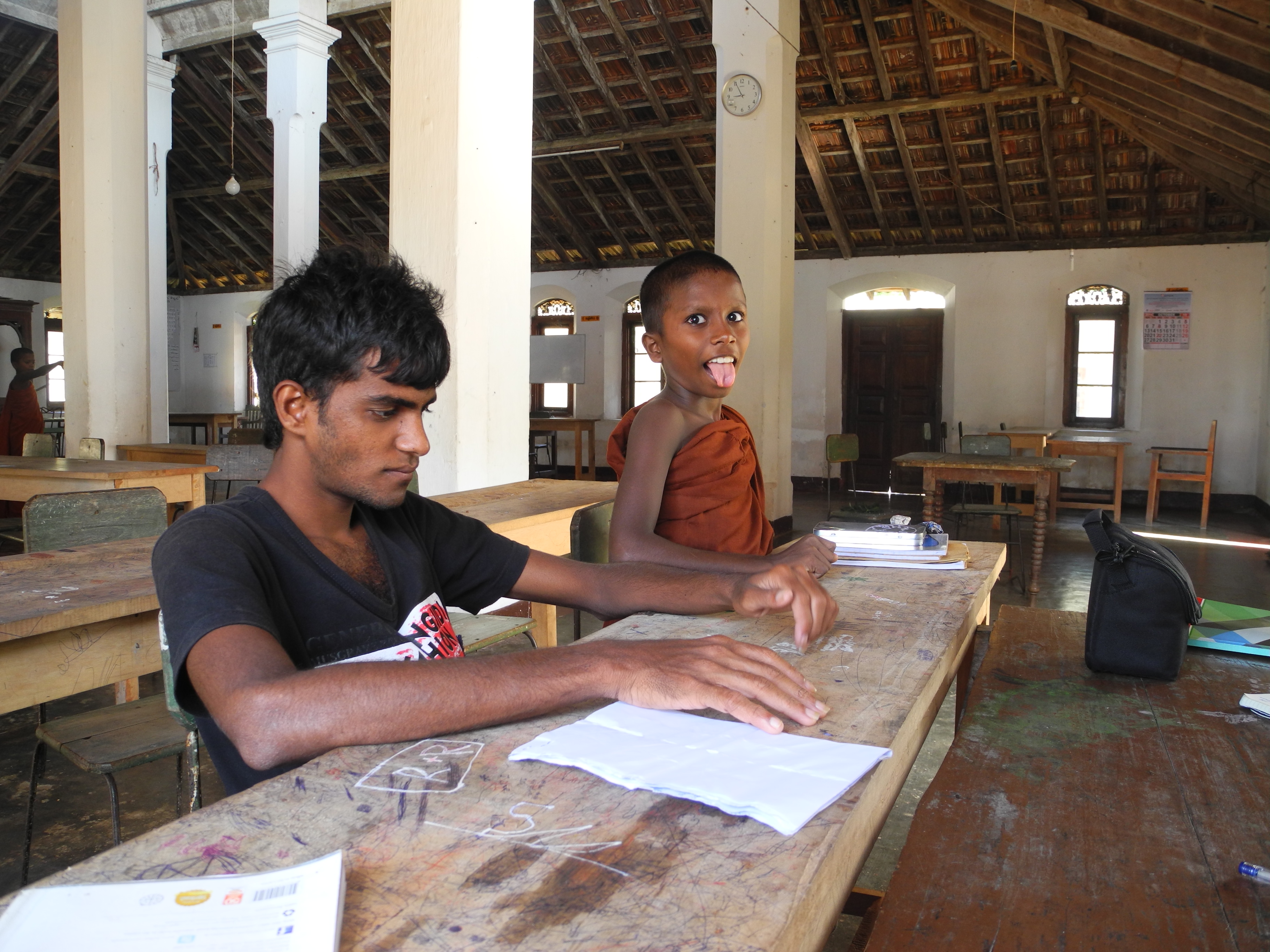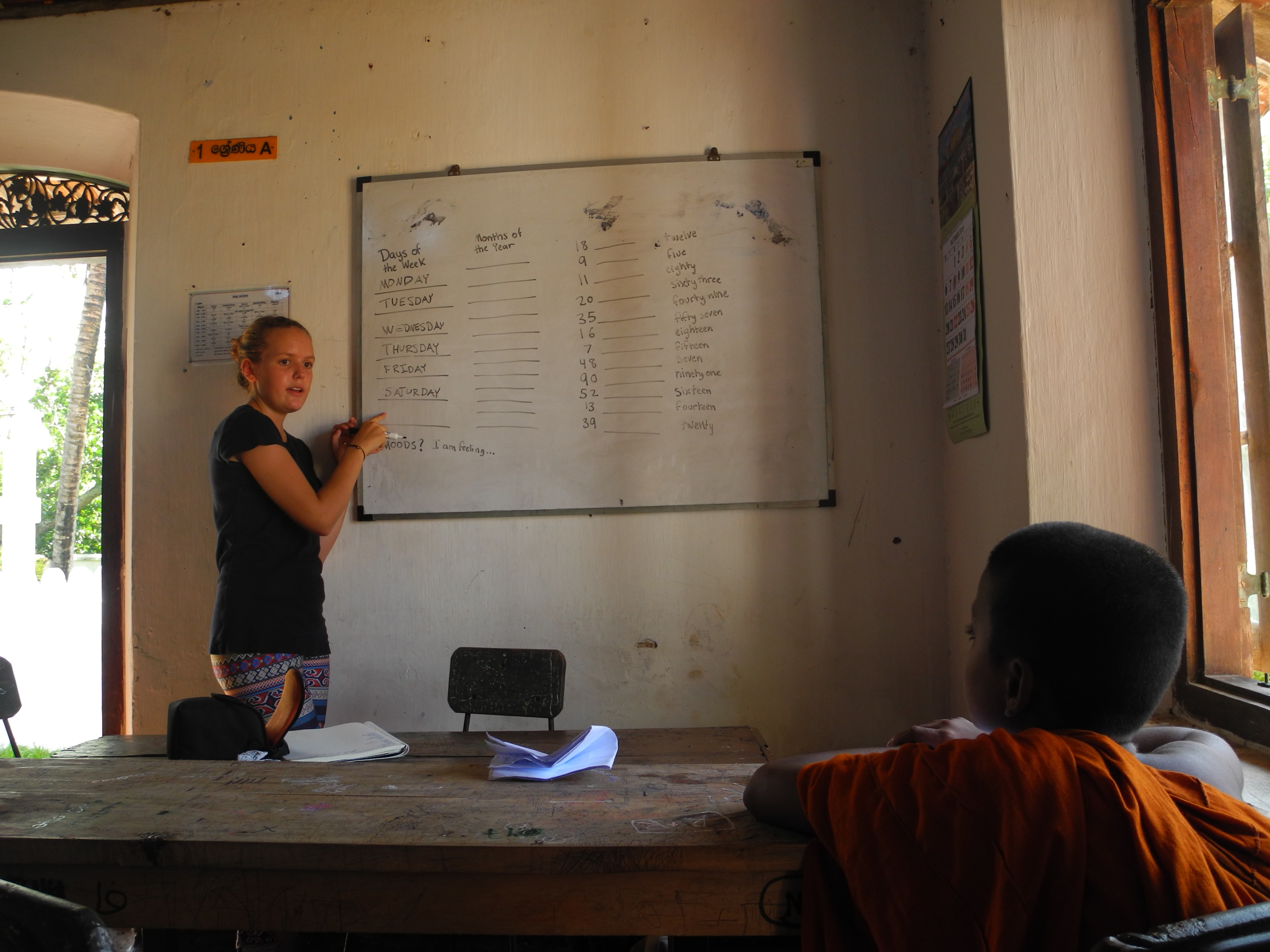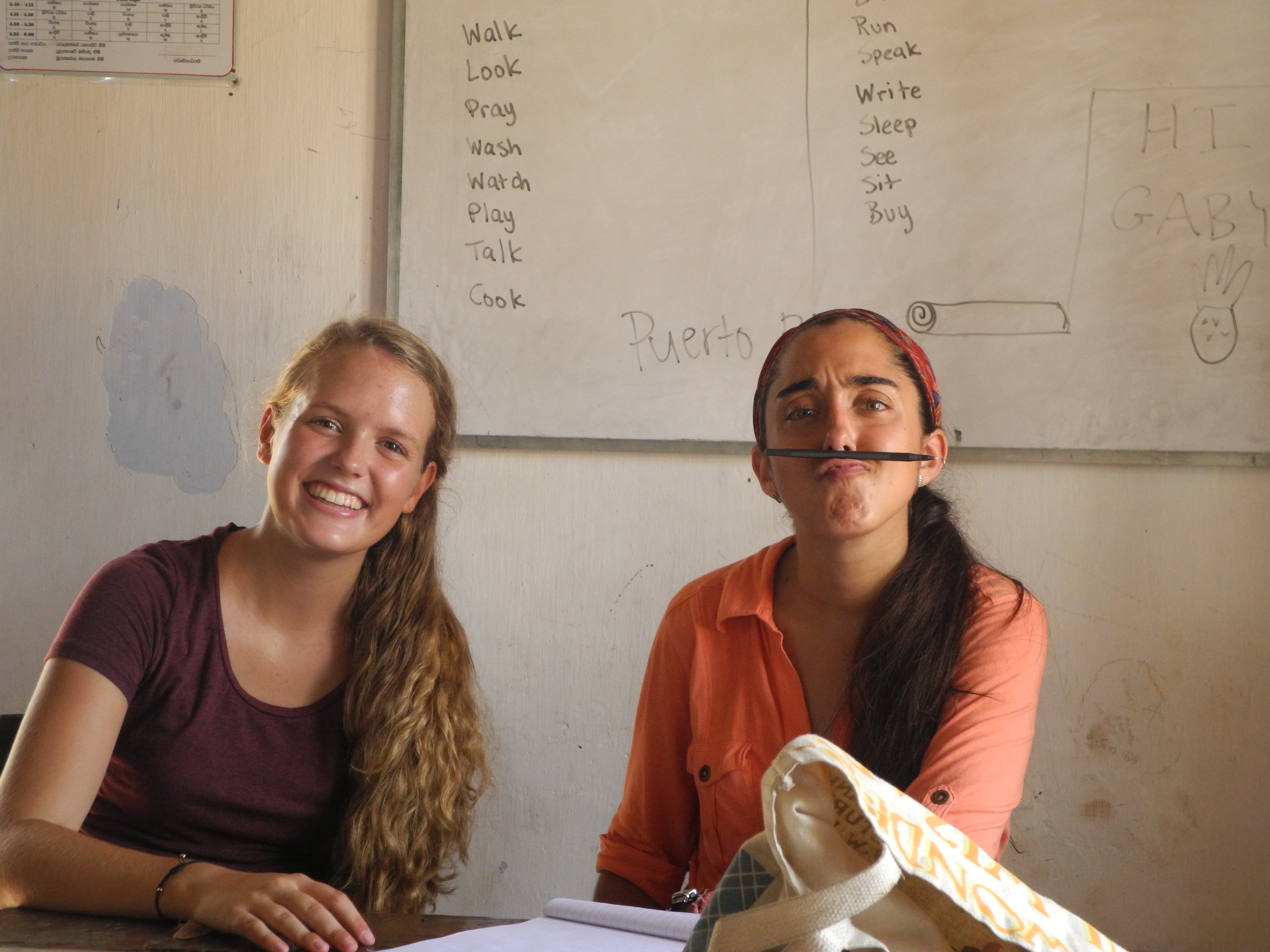
by Gabriela Aleman
“Run run!” yells Dhammarakkitha energetically as he taps me on the shoulder, inviting me to chase him. I advance towards him, but he dances just out of my reach, jumping over rusty chairs and skirting around wooden tables gracefully, his long, monk’s robe failing to inhibit him. Realizing that I won’t be able to catch him, I turn my attention to Buddharakkitha, who is giving me a sly smile from across the room. I run after him, trapping him in a corner behind a desk. I lean one way and he counters my move, locking us in a continuous semi-circle. I finally pick a side and surge forward, but he out maneuvers me by sliding under the desk and popping up on the other side. I look at him and laugh as he mocks me with his tongue. I don’t ever remember being that crafty while playing tag at his age. “Run run,” the monks’ name for tag, is one of a few games I found myself playing this past week at the Buddhist monastery. Intrigued by the work my friend Soleil was doing, I took a break from the orphanage and accompanied her during her last week in Galle to help teach English to the monks.

The youngest monk, at ten years old, is Dhamarakkitha, followed by Buddharakkitha, twelve, and Indasara, seventeen. Dhama is lanky with slim features and the biggest, brightest smile. Though small, he’s an avid learner and is eager to repeat any English phrases you toss at him. Buddha, on the other hand, is always cracking jokes. You can see the mischief harbored in his eyes when he isn’t making faces or running around the classroom in typical class clown fashion. Indasara is incredibly intelligent and quick to laugh. Though I’m older than Indasara, he holds an aura of wisdom that I can’t quite match. The three of them are always joined by Praveen, a twenty-two-year-old Sri Lankan who isn’t a monk but spends all day at the monastery. With his goofy hair and smile, he knows English the best out of the four and has become the unofficial liaison between the teachers and monks.

Each day I spent with Soleil and the monks I became more and more fascinated by their lifestyle and the ideals taught by the Buddhist faith. After a conversation with Indasara, I was able to gather how the three of them ended up at the monastery. Indasara decided independently at the age of thirteen to become a monk, while Dhama and Buddha were given to the monastery at ages seven and nine, respectively. Coming from a very poor family, they couldn’t be taken care of adequately by their parents, so they were accepted by the monastery. This circumstance is rare, but does happen every once in a while.
I was also given a glimpse into their daily schedule. They wake up promptly every morning at six and do a combination of chores and homework until eating breakfast at around eight. By eight thirty, they’re sitting patiently, waiting for Soleil to walk through the doors of the classroom that also acts as a large communal gathering space. She teaches them for about two hours and then gives them some down time to either play games or do their school work. After English class, they go to alms-giving, where they visit different houses in the community to pray, talk about Buddhism, and donate food. Afterwards, they eat lunch, their last meal for the day, and go to school from one to five. Once that’s finished, they have some free time to read or do school work until meditation at six thirty. It is only after mediation ends at seven that they are free to spend what’s left of their day how they want.
As for the English classes, I observed Soleil teaching the monks material ranging from present and past tense verbs to different sports and body parts. I mainly talked to Indasara to help with his conversational English and also played games with the three of them. Mid-week, I found myself at the local bookstore buying a few books on Buddhism that I devoured and used as ammunition to spew questions at Indasara, who answered them knowledgably.

Above all else, I was struck by the normalcy of the three monks. They live extremely simple lives with little to no access to material things; their heads are shaved, they don’t wear shoes, and they almost never leave the monastery. Despite all of this, Dhamma and Buddha are just like every other lively ten and twelve year old I know. Indasara is taking his O levels soon, which are tests he needs to pass to get into University. The week I spent with them was full of Singlish (like Spanglish, but Sinhala and English), impromptu cricket games, run run, philosophical talks about Buddhism, and more jokes and laughter than I could keep track of. I even spent a calm, rainy evening meditating with them in the shrine room. Even though they’re dedicated to the Buddhist faith, with its demanding chores and worship, they still find ways to grow up like every other kid.

